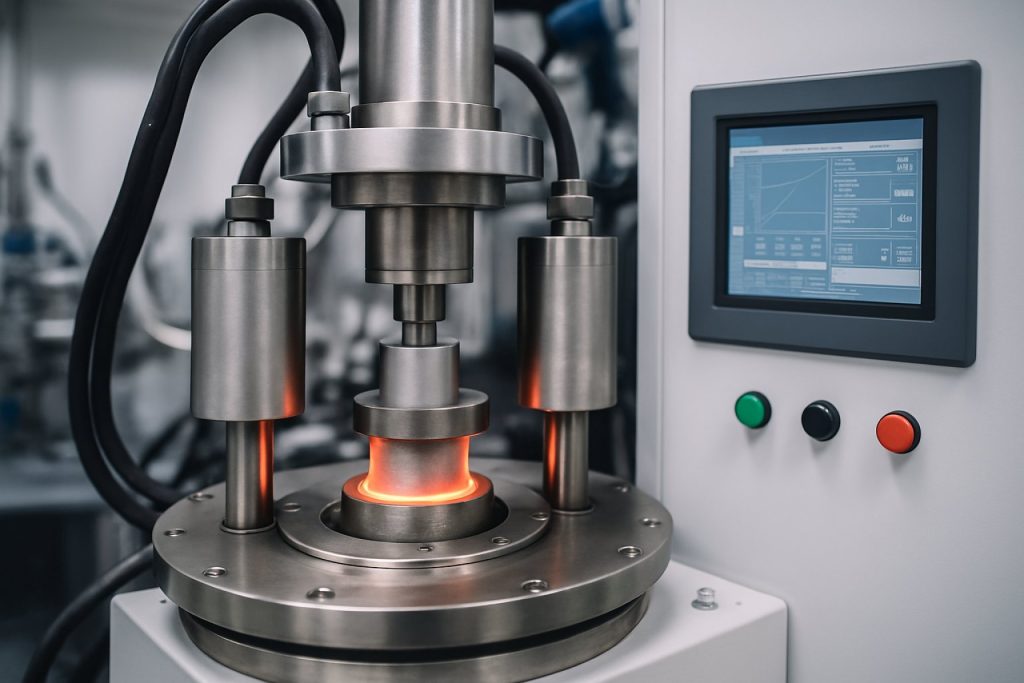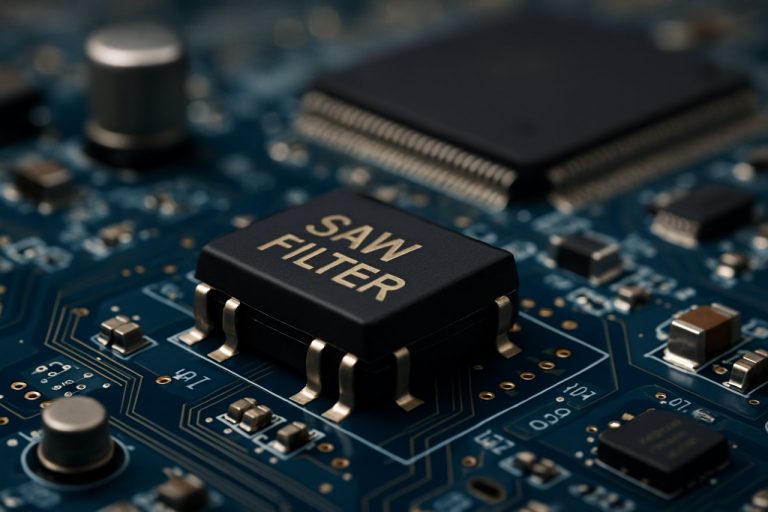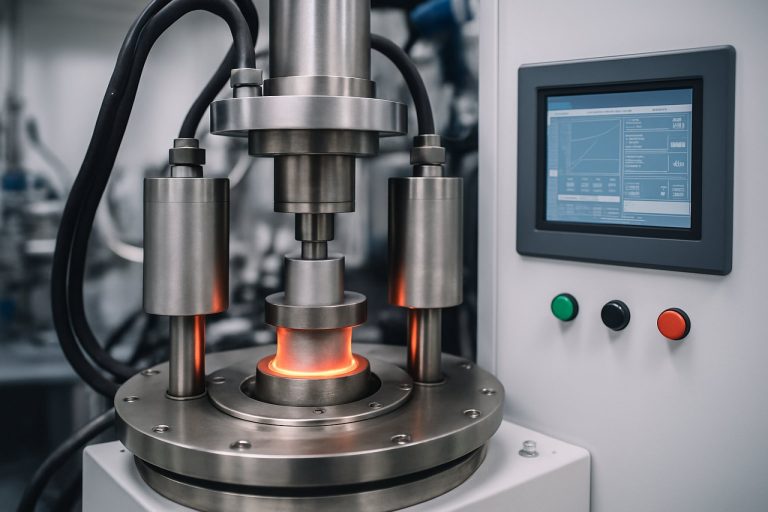
2025 Spark Plasma Sintering Equipment Manufacturing Market Report: Trends, Forecasts, and Strategic Insights for Industry Leaders. Explore Growth Drivers, Regional Dynamics, and Competitive Analysis Shaping the Next 5 Years.
- Executive Summary & Market Overview
- Key Technology Trends in Spark Plasma Sintering Equipment
- Competitive Landscape and Leading Manufacturers
- Market Growth Forecasts (2025–2030): CAGR, Revenue, and Volume Analysis
- Regional Market Analysis: North America, Europe, Asia-Pacific, and Rest of World
- Future Outlook: Innovation, Investment, and Emerging Applications
- Challenges, Risks, and Strategic Opportunities for Stakeholders
- Sources & References
Executive Summary & Market Overview
The global spark plasma sintering (SPS) equipment manufacturing market is poised for robust growth in 2025, driven by increasing demand for advanced materials in sectors such as aerospace, automotive, electronics, and energy. Spark plasma sintering, also known as field-assisted sintering technique (FAST), is a powder metallurgy process that enables rapid densification of materials at lower temperatures and shorter times compared to conventional sintering methods. This technology is particularly valued for its ability to produce high-performance ceramics, composites, and metals with superior mechanical and functional properties.
In 2025, the SPS equipment market is expected to benefit from ongoing investments in research and development, particularly in Asia-Pacific and Europe, where governments and private enterprises are prioritizing advanced manufacturing capabilities. According to MarketsandMarkets, the global SPS equipment market size was valued at approximately USD 90 million in 2023 and is projected to grow at a CAGR of over 6% through 2028, with 2025 representing a pivotal year for capacity expansions and new product launches.
Key market drivers include the rising adoption of SPS technology for the fabrication of next-generation battery materials, thermoelectric devices, and high-temperature structural components. The automotive industry, in particular, is leveraging SPS for lightweight, high-strength parts to meet stringent emission and efficiency standards. Additionally, the electronics sector is utilizing SPS for the production of advanced ceramics and functional materials used in semiconductors and sensors.
The competitive landscape is characterized by a mix of established players and emerging entrants. Leading manufacturers such as Sinter Land Inc., FCT Systeme GmbH, and SPEX SamplePrep are expanding their product portfolios and global footprints through strategic partnerships and technological innovation. Meanwhile, academic and government research institutions continue to play a significant role in advancing SPS process capabilities and broadening application areas.
Challenges persist, including high capital costs, the need for skilled operators, and the ongoing requirement for process optimization to ensure repeatability and scalability. However, the market outlook for 2025 remains positive, underpinned by strong end-user demand, technological advancements, and supportive policy frameworks in key regions.
Key Technology Trends in Spark Plasma Sintering Equipment
Spark Plasma Sintering (SPS) equipment manufacturing is undergoing significant technological evolution as the market responds to demands for higher efficiency, scalability, and material versatility. In 2025, several key technology trends are shaping the competitive landscape and driving innovation in SPS equipment design and production.
- Advanced Process Control and Automation: Manufacturers are integrating sophisticated process control systems, including real-time temperature, pressure, and current monitoring, to enhance reproducibility and reduce human error. Automation is increasingly prevalent, enabling precise control over sintering cycles and facilitating the production of complex, high-performance materials. Companies such as SPEX SamplePrep and Sinter Land Inc. are at the forefront of incorporating Industry 4.0 principles into their SPS equipment.
- Scalability and Large-Scale Production: Traditional SPS systems were limited to laboratory-scale applications, but recent advancements have enabled the development of large-chamber SPS equipment suitable for industrial-scale manufacturing. This trend is driven by the need to produce bulk components for automotive, aerospace, and energy sectors. FCT Systeme GmbH and Sumitomo Coal Mining Co., Ltd. have introduced scalable SPS systems capable of handling larger sample volumes and higher throughput.
- Material Versatility and Hybrid Capabilities: The latest SPS equipment is designed to process a broader range of materials, including advanced ceramics, metal matrix composites, and functionally graded materials. Hybrid sintering technologies, which combine SPS with hot pressing or field-assisted sintering, are gaining traction for their ability to tailor microstructures and enhance material properties. Kyocera Corporation and Tosoh Corporation are investing in R&D to expand the material capabilities of their SPS platforms.
- Energy Efficiency and Sustainability: Energy consumption and environmental impact are critical considerations in equipment design. Manufacturers are optimizing power delivery systems and insulation materials to reduce energy usage and improve overall sustainability. According to MarketsandMarkets, energy-efficient SPS systems are expected to see increased adoption, particularly in regions with stringent environmental regulations.
These technology trends are not only enhancing the performance and flexibility of SPS equipment but are also expanding the application scope across industries, positioning SPS as a key enabling technology for next-generation materials manufacturing in 2025 and beyond.
Competitive Landscape and Leading Manufacturers
The competitive landscape of the spark plasma sintering (SPS) equipment manufacturing sector in 2025 is characterized by a mix of established global players and emerging regional manufacturers, each vying for technological leadership and market share. The market is moderately consolidated, with a handful of companies dominating the high-end segment, while several smaller firms cater to niche applications and local demand.
Key industry leaders include Sinter Land Inc., FCT Systeme GmbH, and Sumitomo Heavy Industries, Ltd., all of which have a strong global presence and a broad portfolio of SPS systems. These companies are recognized for their continuous investment in R&D, resulting in advanced features such as precise temperature control, scalability for industrial production, and integration with Industry 4.0 solutions. For instance, FCT Systeme GmbH has focused on modular system designs and automation, catering to the growing demand for high-throughput sintering in automotive and electronics sectors.
Japanese manufacturers, notably Sumitomo Heavy Industries, Ltd. and SPS Syntex Inc., maintain a competitive edge through proprietary technologies and strong relationships with research institutions. Their equipment is widely adopted in academic and industrial R&D, particularly for advanced ceramics and functional materials.
In China, domestic players such as Wuhan Kejing Material Technology Co., Ltd. and Shenyang Hejin Holding Co., Ltd. are rapidly expanding, supported by government initiatives to localize high-end manufacturing equipment. These firms are increasingly competitive in terms of cost and customization, targeting both domestic and international markets.
- Sinter Land Inc. – Focuses on high-precision SPS systems for research and industrial use.
- FCT Systeme GmbH – Known for scalable, automated SPS solutions for mass production.
- Sumitomo Heavy Industries, Ltd. – Offers advanced, research-oriented SPS equipment.
- SPS Syntex Inc. – Specializes in compact, energy-efficient SPS systems.
- Wuhan Kejing Material Technology Co., Ltd. – Leading Chinese supplier with a growing export footprint.
Strategic collaborations, patent portfolios, and after-sales service networks are key differentiators among leading manufacturers. As the SPS market matures, competition is expected to intensify, particularly in the context of expanding applications in energy, aerospace, and biomedical sectors.
Market Growth Forecasts (2025–2030): CAGR, Revenue, and Volume Analysis
The spark plasma sintering (SPS) equipment manufacturing market is poised for robust growth between 2025 and 2030, driven by increasing demand for advanced materials in sectors such as automotive, aerospace, electronics, and energy. According to recent projections, the global SPS equipment market is expected to register a compound annual growth rate (CAGR) of approximately 7.5% during this period, with market revenues anticipated to reach over USD 250 million by 2030, up from an estimated USD 160 million in 2025 MarketsandMarkets.
Volume-wise, the number of SPS units shipped globally is forecasted to grow from around 350 units in 2025 to nearly 600 units by 2030. This expansion is attributed to the increasing adoption of SPS technology for the rapid densification of ceramics, composites, and metal powders, which is critical for high-performance applications. The Asia-Pacific region, particularly China, Japan, and South Korea, is expected to dominate both revenue and volume growth, accounting for over 45% of global shipments by 2030, due to significant investments in research and development and the presence of leading manufacturers Grand View Research.
Europe and North America are also projected to experience steady growth, supported by the expansion of advanced manufacturing sectors and government initiatives promoting sustainable and energy-efficient production technologies. The increasing focus on electric vehicles and renewable energy infrastructure is further fueling demand for SPS equipment, as these industries require materials with superior mechanical and thermal properties Fortune Business Insights.
- CAGR (2025–2030): ~7.5%
- Revenue (2025): USD 160 million
- Revenue (2030): USD 250+ million
- Volume (2025): ~350 units
- Volume (2030): ~600 units
- Key Growth Regions: Asia-Pacific, Europe, North America
Overall, the SPS equipment manufacturing market is set for significant expansion through 2030, underpinned by technological advancements, expanding end-use applications, and regional investments in high-value material processing.
Regional Market Analysis: North America, Europe, Asia-Pacific, and Rest of World
The global spark plasma sintering (SPS) equipment manufacturing market is witnessing dynamic growth, with regional trends shaped by technological adoption, research investments, and industrial demand. In 2025, North America, Europe, Asia-Pacific, and the Rest of the World (RoW) each present distinct market characteristics and growth drivers.
North America remains a significant hub for SPS equipment manufacturing, driven by robust investments in advanced materials research and the presence of leading aerospace, automotive, and defense industries. The United States, in particular, benefits from strong university-industry collaborations and government funding for materials innovation. Key players such as Dynamic Systems Inc. and FCT Systeme GmbH (with North American operations) are expanding their portfolios to meet the demand for high-performance ceramics and composites. The region’s focus on additive manufacturing and energy-efficient processes further accelerates SPS adoption.
Europe is characterized by a mature market with a strong emphasis on sustainability and precision engineering. Countries like Germany, France, and the UK are at the forefront, leveraging SPS technology for automotive lightweighting, renewable energy, and biomedical applications. The European Union’s funding initiatives, such as Horizon Europe, support R&D in advanced manufacturing, benefiting SPS equipment suppliers. Companies like Sinterland Srl and FCT Systeme GmbH are prominent, with a focus on custom solutions and integration with Industry 4.0 standards.
- Asia-Pacific is the fastest-growing region, propelled by rapid industrialization, government support, and expanding electronics and automotive sectors. China, Japan, and South Korea are major contributors, with China’s “Made in China 2025” initiative and Japan’s advanced ceramics industry fueling demand. Local manufacturers, such as SPS Syntex Inc. and Sinterland Srl (with Asia-Pacific operations), are scaling up production and investing in R&D to cater to both domestic and export markets.
- Rest of the World (RoW) includes emerging markets in Latin America, the Middle East, and Africa. While adoption is at an early stage, increasing investments in infrastructure and materials research are expected to drive gradual growth. Partnerships with established global players and technology transfer initiatives are key strategies in these regions.
Overall, regional market dynamics in 2025 reflect a blend of technological leadership, policy support, and sector-specific demand, with Asia-Pacific poised for the highest growth rate, while North America and Europe maintain strong innovation-driven markets for SPS equipment manufacturing.
Future Outlook: Innovation, Investment, and Emerging Applications
The future outlook for spark plasma sintering (SPS) equipment manufacturing in 2025 is shaped by a convergence of technological innovation, increased investment, and the emergence of new application domains. As industries seek advanced materials with superior properties, SPS technology is gaining traction for its ability to produce dense, high-performance components with reduced processing times and energy consumption.
Innovation remains a key driver. Equipment manufacturers are focusing on enhancing process control, scalability, and automation. Recent advancements include the integration of real-time monitoring systems, improved temperature and pressure uniformity, and the development of larger-capacity SPS units to accommodate industrial-scale production. These innovations are expected to lower operational costs and expand the range of materials that can be processed, including complex composites and functionally graded materials. According to Frost & Sullivan, the next generation of SPS equipment will likely feature AI-driven process optimization and digital twin technologies, enabling predictive maintenance and higher reproducibility.
Investment trends are robust, with both established players and startups attracting funding to expand manufacturing capabilities and R&D. Governments in Asia, Europe, and North America are supporting SPS technology through grants and public-private partnerships, recognizing its strategic importance in sectors such as aerospace, defense, and energy. For instance, the European Union’s Horizon Europe program has earmarked funds for advanced manufacturing technologies, including SPS, to bolster regional competitiveness (European Commission).
Emerging applications are broadening the market landscape. In 2025, SPS is expected to play a pivotal role in the fabrication of solid-state batteries, thermoelectric devices, and advanced ceramics for medical implants. The automotive industry is exploring SPS for lightweight, high-strength components, while the electronics sector is leveraging the technology for novel semiconductor materials. The growing demand for sustainable manufacturing is also propelling SPS adoption, as it enables lower energy consumption and reduced waste compared to conventional sintering methods (MarketsandMarkets).
In summary, the outlook for SPS equipment manufacturing in 2025 is highly positive, underpinned by continuous innovation, strong investment flows, and the proliferation of high-value applications across multiple industries. These trends are expected to accelerate market growth and solidify SPS as a cornerstone technology in advanced materials processing.
Challenges, Risks, and Strategic Opportunities for Stakeholders
The spark plasma sintering (SPS) equipment manufacturing sector faces a complex landscape of challenges, risks, and strategic opportunities as it moves into 2025. The industry, which serves advanced ceramics, powder metallurgy, and emerging materials markets, is shaped by rapid technological evolution, supply chain vulnerabilities, and shifting global demand.
Challenges and Risks
- High Capital Intensity and R&D Costs: SPS equipment manufacturing requires significant investment in precision engineering, automation, and materials science. The need for continuous R&D to improve process control, scalability, and energy efficiency puts pressure on margins, especially for smaller players (Grand View Research).
- Supply Chain Disruptions: The sector is vulnerable to disruptions in the supply of high-grade graphite dies, advanced sensors, and power electronics. Geopolitical tensions and trade restrictions, particularly between the US, China, and Europe, can impact the availability and cost of critical components (MarketsandMarkets).
- Technical Barriers and Standardization: The lack of universal process standards and the complexity of integrating SPS with Industry 4.0 solutions create adoption barriers for end-users. This can slow market penetration, especially in conservative industries such as aerospace and medical devices (Frost & Sullivan).
- Environmental and Regulatory Pressures: As sustainability becomes a priority, manufacturers must address the energy consumption and carbon footprint of SPS processes. Compliance with evolving environmental regulations in key markets adds operational complexity and cost.
Strategic Opportunities
- Advanced Materials and Additive Manufacturing: The growing demand for high-performance ceramics, composites, and functionally graded materials in EVs, semiconductors, and defense creates new application spaces for SPS equipment (IDTechEx).
- Global Expansion and Localization: Manufacturers can mitigate supply chain risks by localizing production and forming strategic partnerships in emerging markets such as India and Southeast Asia, where government incentives for advanced manufacturing are increasing.
- Digitalization and Automation: Integrating AI-driven process monitoring, predictive maintenance, and remote diagnostics can differentiate offerings and reduce total cost of ownership for end-users.
- Collaborative Innovation: Partnerships with research institutes and end-users to co-develop application-specific SPS solutions can accelerate adoption and open new revenue streams.
In summary, while the SPS equipment manufacturing sector in 2025 faces significant headwinds, proactive investment in innovation, supply chain resilience, and customer-centric solutions will be key to capturing emerging opportunities.
Sources & References
- MarketsandMarkets
- FCT Systeme GmbH
- SPEX SamplePrep
- Grand View Research
- Fortune Business Insights
- Dynamic Systems Inc.
- Frost & Sullivan
- European Commission
- IDTechEx



